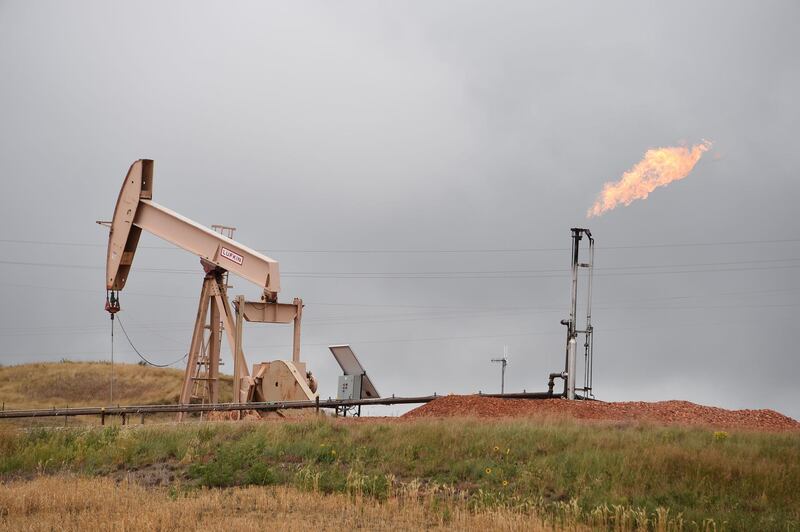The rivalry for market share of global oil sales was sparked by the US in 2016 when incentives were offered to domestic crude cil companies, prompting them to expand and focus on their own production capabilities.
Previously dominated by Opec oil-producing companies, the change in strategy from the US changed the global oil markets for good. It’s difficult to imagine circumstances going back to pre-2016 when the US was an importer of crude oil. The world’s largest economy has significantly reduced crude oil imports as it heads to energy independence.
The big-picture impact on oil prices is that US shale’s abundant production is a counterbalance to Opec’s supply cuts. Oil prices find it hard to ride a rally when the global supply is more than meeting global demand, keeping prices in check compared to the pre-collapse years before 2014.
State of play
US shale’s drive to gain global market share comes at a difficult time for world growth. There are big obstacles in the way of factory output, one of the main consumers of crude oil.
We’re talking, of course, about the US-China trade negotiations and tariff hikes which have pressured investor sentiment, factory orders and risk appetite. The US manufacturing sector is feeling the squeeze judging by its Purchasing Manager Indices readings, which dropped below 50 for three straight months from August to October, after falling steadily from above 60 in the first quarter of 2018. A reading over 50 indicates expansion in the sector, while a reading under 50 indicates a contraction.
For US shale there’s even more bad news since China slapped a 5 per cent tariff on crude oil imports from America. This is likely to be an unwelcome result for the US administration as it is in direct contradiction to the policy of dominating the global oil markets. Added to growing doubts that US shale can sustain such rapid growth, the industry may face a correction in the foreseeable future.
Although there have been positive signs out of trade talks between the world’s two largest economies, the economic losses are accumulating. China’s services sector is feeling the pinch on profits because due to higher tariffs and it is now much more expensive for US importers to order from Chinese companies. A reduction in corporate profits usually translates to lower investment in job creation and employee retention and indeed, official statistics show unemployment creeping up in China’s services sector. This unwelcome trend ties into fears of a global recession and thus reduces the demand for crude oil.
The Brexit effect
Shifting to the European economy, Brexit uncertainty has been kicked down the road to January 31. UK elections are coming up along with a possible change of government. A change of government could also mean a change in Brexit policy, or even a reversal.
Growth in Europe’s largest economy, Germany, is inching along, barely avoiding a technical recession with third-quarter growth at 0.1 per cent. On top of the Brexit pressure, Europe’s manufacturers face uncertainty over their sales in China because growth in the Asian giant has trimmed and consumer sentiment is wary of overspending.
Where is Opec standing in all of this? The group has cut its global oil demand outlook several times and reports suggest further supply cuts are an option in 2020.
One argument for supply cuts to continue and even deepen is Aramco’s initial public offering, much of the value of which is based on oil prices.
Given the threat that the US-China trade dispute and uncertainty pose to the global economy if a trade deal isn’t signed soon, it’s likely that Opec will have to make deeper supply cuts to maintain oil prices around $62 per barrel, where they are at the time of writing. However, Opec’s supply cuts have no influence over US shale production. On the contrary, they provide another opportunity for US producers to gain market share.
All in all, Opec’s supply cuts remain checkmated by US shale’s production growth but both parties face the game-changing circumstances of the US-China trade disputes. More along the lines of high-stakes poker, the trade talks would need to reach a definitive conclusion before oil markets and global growth can return to normal.
Hussein Sayed is the chief market strategist at FXTM







